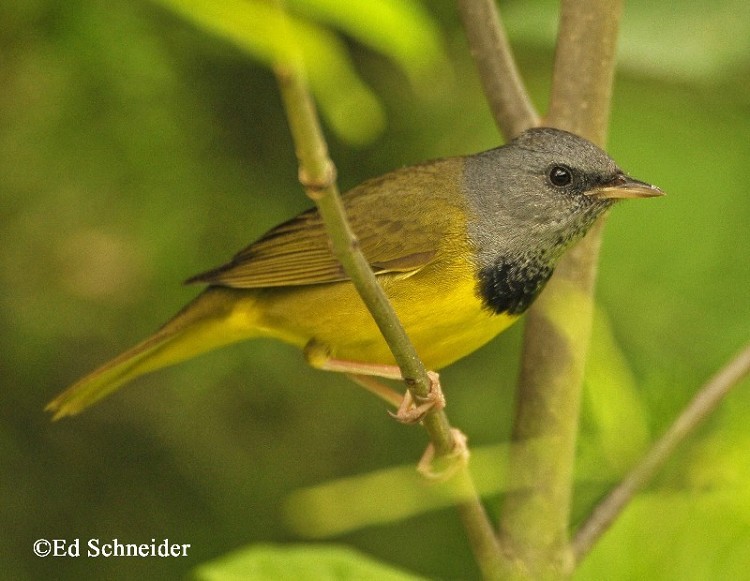Mourning Warbler, Geothylpis philadelphia
The Mourning Warbler usually remains hidden in low and dense vegetation. It is a common breeding bird across Canada east of the Rockies and in the northeastern United States and is a rare migrant in Tennessee. The Mourning Warbler is most likely to be found in Middle Tennessee during spring migration as the birds return from their wintering grounds in southern Central America and northern South America.
Description: This is a small songbird that is olive-green above, and yellow below, and has a gray hood, and pink legs. The breeding male has a darker hood with a patch of black where the hood meets the chest. Females and juveniles are duller and may have a thin incomplete eye-ring.
Length: 5.25"
Wingspan: 7.5"
Weight: 0.44 oz
Voice: Song is a short, rhythmic series of two-syllable phrases, chirry, chirry, chirry, chorry, chorry, with the last phrases lower.
Similar Species:
- Connecticut Warbler has a completely white eye ring and a paler gray hood.
- Juvenile Common Yellowthroat similar to juvenile Mourning Warbler, but has a white belly.
Habitat: Weedy and shrubby thickets, disturbed second-growth forested areas, and wooded areas with dense underbrush.
Diet: Insects, insect larvae, and spiders
Nesting and reproduction: The Mourning Warbler has not been documented nesting in Tennessee.
Status in Tennessee: Rare migrant. Most likely to be seen from early May to late May and in fall from early September to early October. There are more spring records than fall records and twice as many records for Middle Tennessee than in other parts of the state.
Fun Facts:
- The name "mourning" warbler refers to the male's hood, thought to resemble a mourning veil.
- Both male and female Mourning Warblers pretend to have broken wings to distract predators close to their nest.
- The adult female Mourning Warbler eats the eggshells after the young hatch.
- The philadelphia in the scientific name comes from the city where Alexander Wilson first collected this bird in 1810. This species is actually less common in Philadelphia than in many other places.
Best places to see in Tennessee: Weedy and shrubby thickets and in wooded areas with dense underbrush in Middle Tennessee during spring migration.
